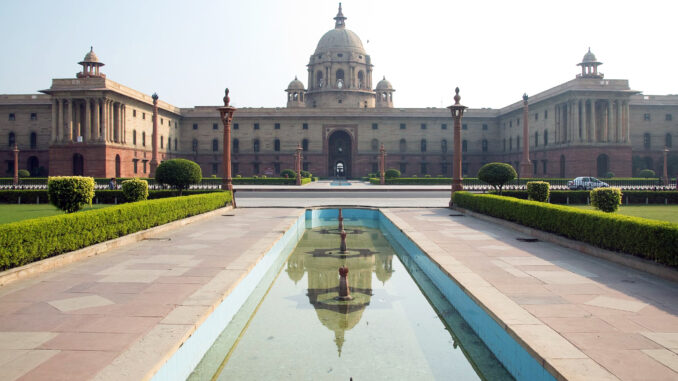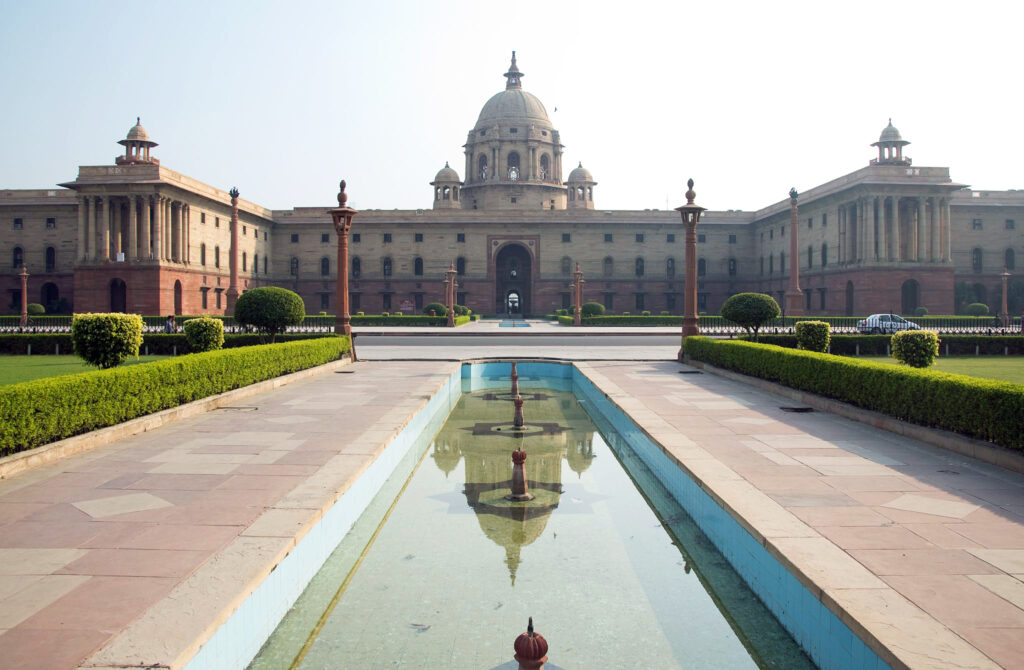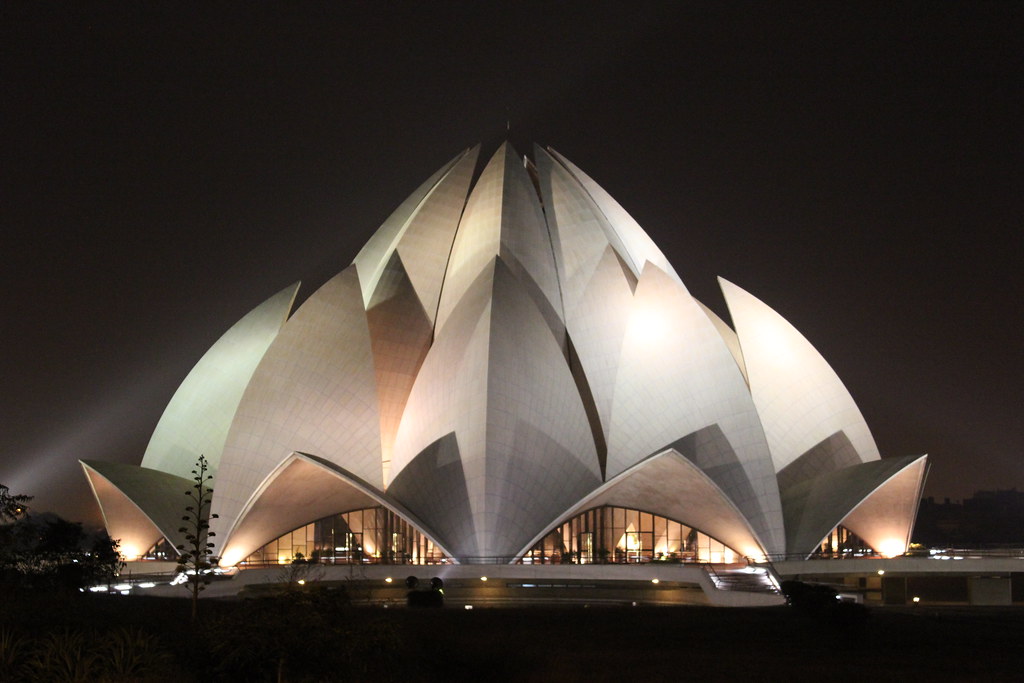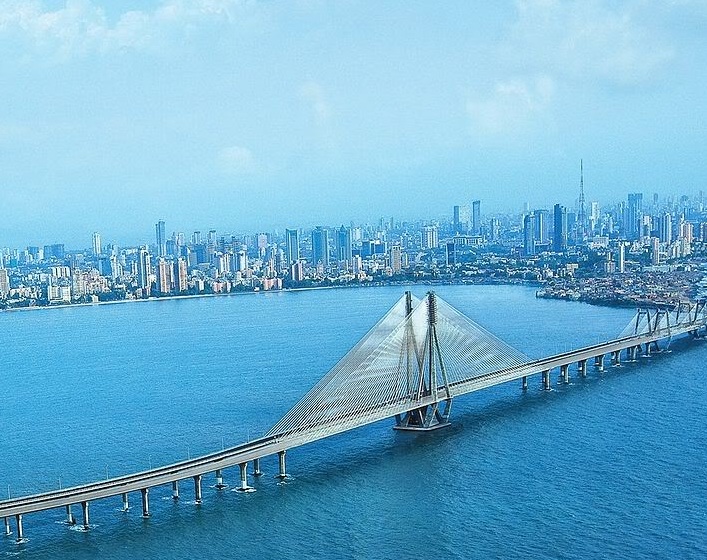
India is a major travel destination and there are no particular risks for business travelers in India. Places to visit in India are also very numerous for tourists. Nevertheless, caution is advised for travelers in India. The country is exposed to a rather peculiar socio-political situation, marked by socio-religious tensions, as well as border tensions with its neighbors, including Pakistan and China.
Political system of India
India is a federal republic consisting of 28 States and 8 Federal Territories. Each State has a local government, headed by a chief minister, but national political authority is exercised by the Federal government (central government), headed by the Prime Minister. India has a political system identical to Canada’s with Federated States, and a policy of parliamentary democracy inspired by the British model. The Prime Minister directs national policy on behalf of the President of the Republic, whose duties are primarily honorary.
Politics is currently dominated by two main parties: the Bharatiya Janata Party (BJP), which is the main right-wing party, and the Indian National Congress (INC), which is the main centre-left party.

Political and social situation of India
India has been governed since May 2014 by Prime Minister Narendra Modi, leader of the Bharatiya Janata Party (BJP). Since his election as India’s head of government, Narendra Modi has governed the country with a liberal policy approach aimed at promoting foreign direct investment, tackling tax evasion, liberalizing the economy, developing infrastructure and reducing social spending. He was re-elected in the general election in May 2019.
The adverse effects of the coronavirus pandemic, followed by inflation and the crisis caused by the war in Ukraine have severely affected the Indian economy. Local companies are facing a number of difficulties in their operations as well as shortages of resources, especially labor. The unemployment rate reached 24% by May 17, 2020.
In response to the economic crisis exacerbated by the war in Ukraine, the Modi government announced a series of measures to help businesses and boost the Indian economy. Businesses are expected to benefit from certain tax exemptions and other temporary easing measures.
The political situation in India is quite turbulent, with fierce rivalry between the various political parties, especially between the ruling BJP and the main opposition party, the INC. Yet partisan rivalries are much more intense at the local level, where clashes between political supporters are regularly reported. Political protests are also common in the country.
The Bharatiya Janata Party is a pro-Hindu formation with a nationalist ideology. This approach has allowed it to more than double its number of seats in the 2014 general elections, as well as a parliamentary majority with 303 seats.
Nevertheless, while Narendra Modi’s nationalist policies are welcomed by a large part of the (predominantly Hindu) population, they are decried by some minorities, particularly Muslims, who feel increasingly marginalized. Indeed, the Modi government is accused of promoting an anti-Muslim policy. These accusations have been heightened by the revocation of the constitutional autonomy of the Muslim-majority region of Kashmir in August 2019, as well as the adoption in December 2019 of the controversial Citizenship Act (CAA). Violent series of protests rocked the country in 2019 against Modi’s anti-Muslim policies, particularly in Muslim-majority cities, but also in major cities like Delhi. Although a relative calm has been noted in the country recently, similar protests are likely in the near future, particularly due to persistent tensions between the different communities, and the economic difficulties. Strikes and protests are common in India and may escalate at any time. Transport and other public services are regularly affected. Travelers should avoid any protests in the country.
Security situation in India
The security situation in India remains particularly complex due to the economic crisis, but also because of the government’s nationalistic policy of “excluding” certain communities. Social protests are very common across the country and may suddenly turn violent, even when they are supposed to be peaceful. The threat of terrorism looms in some parts of the country, particularly in the Jammu and Kashmir region where Pakistani militiamen are very active. The threat has become much more significant and now affects all parts of the country following the revocation of the constitutional autonomy of the state of Jammu and Kashmir by the Indian government on August 5, 2019. This decision by New Delhi has not only led to increased tensions with neighboring Pakistan, but has also further radicalized the local population of Muslim-majority Kashmir, who feel increasingly marginalized.
In addition, Naxalite (Maoist) rebel activity is also a risk in some parts of the country, particularly in rural areas of Chhattisgarh, Jharkhand, Andhra Pradesh, Bihar, Madhya Pradesh, Maharashtra, Odisha, Uttar Pradesh and West Bengal. Maoist extremist groups are radical left-wing communists who advocate Maoist politics and ideology. They have been in conflict with the Indian government for several years.
In addition, women traveling to Inida may be exposed to sexual harassment. Crimes such as rape tend to be widespread in India. Sexual assaults have been reported in areas where Westerners live as well as in other places. It is advisable to avoid walking alone in less crowded areas, especially at night. Travelers visiting India are advised to exercise caution in the country.
Travel to NEW DELHI
The Indian capital is growing rapidly and attracts many international visitors and foreign workers. Travel to New Delhi has become quite interesting in recent years. The government has embarked on an extensive infrastructure upgrade program in New Delhi, which remains a very hectic city. While there has been an improvement in the city’s public transportation system, the Delhi Metro remains one of the most crowded for travel within India. Indeed, travel by metro in Delhi is particularly difficult during rush hour in this megacity of over 21 million people. Land travel in New Delhi, especially travel by car, may be difficult in Delhi due to frequent traffic jams.

Delhi is home to foreign nationals working in various industries. In addition to a portion of foreign nationals from various backgrounds, Delhi is home to large Indian communities of different cultures and languages. There are no particular risks in the capital for expatriates or other visitors in Delhi, but caution is still advised. Some areas in Delhi are not safe after dark. When visiting India, especially if traveling to Delhi, it is recommended to avoid walking alone in crowded streets during late hours.
Petty crime is sometimes reported in Delhi, such as pickpocketing and purse snatching. These crimes are often committed by motorcycle thieves. These acts are much more common in crowded places, including markets, fairs, public transportation, airports, and train stations, including night and long-distance trains. Foreigners in Delhi are also often targeted by attempted scams, especially from cab drivers. Beware of unsolicited offers from strangers.
In addition, there may be disruptions in transportation and travel due to social protests. Protests are common in India and may be violent. Security forces often use force to disperse protest rallies.
Travel to MUMBAI
Traveling to Mumbai may be very exciting as the city is the economic capital of India, as well as the business center of the country with a large expatriate and tourist community. People visiting India often visit Mumbai due to its wide ressources and historical heritage.
The security situation in Mumbai has been heightened since the coordinated terrorist attacks of November 26-29, 2008. Several foreign multinationals operate in Mumbai. The infrastructure is well developed and life is very busy. Mumbai is India’s largest city and the center of the film industry (Bollywood).

Like Delhi, Mumbai is a crowded city, where travel conditions are generally difficult. Traffic jams are frequent and can be quite long, while public transportation in Mumbai is often crowded or difficult to access. Trains in Mumbai are generally overcrowded, especially during rush hour. Roads are also in poor condition and generally poorly maintained, making driving in Mumbai difficult. Some drivers do not respect traffic norms. Caution should be exercised. With a high standard of living, combined with the high cost of housing, renting a car is generally the preferred option for most expatriates.
In addition, as with other crowded cities in the country, petty crime exists in Mumbai, with minor crimes including scams and pickpocketing. Indeed, despite the development of the city and its infrastructure, some areas of Mumbai are home to some of the poorest slums in India. It is advisable to be cautious and to avoid exposed or little frequented places.
Tips for travelers to India
Places to avoid (New Delhi and Mumbai)
If traveling to India, you should bear in mind that some places in Delhi and Mumbai are considered dangerous due to criminal activity. Women visiting India are most exposed. Criminal acts are much more frequent after dark in India, including in Delhi and Mumbai. It is important to always remain vigilant. Avoid walking alone in narrow streets during late hours.
The most exposed areas in New Delhi
- The area around the Dabur ITO metro station in Delhi during late hours.
- Slums, Mundka, Palam and surrounding areas.
- Ambedkar Nagar,
- Madangir,
- Sangam Vihar,
- Dakshinpuri,
- Govindpuri,
- Badarpur,
- Mehrauli,
- Garstin Bastion Road,
- Nithari Village.
The most exposed areas in Mumbai
- The central suburbs of Mumbai.
- Around the Metro stations during late hours.
- Chowpatty
- Aarey Colony
- Dharavi
- Nallasopara
- Kausa-Mumbra
- The secondary roads south of Mumbai.

Leave a Reply